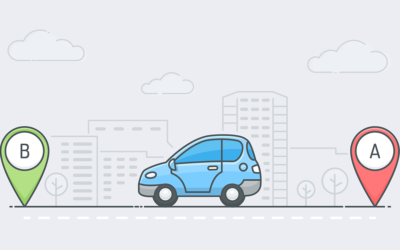Understanding Communities That Move: Episode 1, Introduction
Written by: Leah Hanvey
The state of the world today has taught us a lot. Among those lessons, COVID-19 has highlighted that the movement of people is directly tied to how well our society functions. When movement shuts down, as we have witnessed these last few weeks and as we brace for more, we all feel it.
This is because transportation in itself, does not exist in a vacuum. We all know this to be true from shared experiences. A father gets into his car to pick up his kids at school. A student takes the bus to pick up groceries for his dorm. A businesswoman gets onto a flight to land a deal for her company. Transportation is the connective tissue for communities and the amenities, schools, businesses, residences are the big muscles. Lack of transportation and free movement of goods, services, and people can be severely damaging to global and local economies.
But, for historically technological and efficiency reasons, we have designed our governments to separate the operation, management, and planning of transportation systems from everything else. In fact, each disciplinary function within community management (economic development, urban planning, water systems, parks and recreation, etc.) has been compartmentalized, or shall I say, “departmentalized”.
Departmentalization, which further entrenches itself as communities grow and require more services in variety and volume, has subsequently ebbed natural flows of communication and resources between primary functions of government. This slows governments down and it means knowledge of how decisions affect other aspects of the community is siloed and fragmented. Again, given our historical situation this makes total sense! It is not in itself the problem; it is a symptom of government needing to departmentalize in order to perform and sustain the public services to meet an ever-growing demand.
I want to pause to make a clear distinction: Specialization is different from departmentalization and it is very important. If we’re going to go with the medical metaphors, given the times, let’s just go for it, shall we? For instance: just as you do not want your dentist performing your heart surgery or building any bridges. Your dentist specializes in your teeth. However, you do expect your dentist to have your historical health records. You also expect the health records to be equally accessible (and non-variant!!!) to your surgeon via a central health records management institution and system. Medical staff that treat you should be fully aware of how their diagnoses, prescriptions, and operations will affect your health (e.g., allergies to antibiotics, low tolerances to anesthetic, genetic conditions, etc.). Decisions that are best for your body require holistic knowledge of how those decisions will impact the rest of your system and they require supporting infrastructure to do so. The same is true our communities.
What is exciting and positive about the world today (there are many things, and this is one of them!) is that technology has advanced to defy the old constraints of legacy systems. Technology supports near infinite and instantaneous information sharing and receiving. The systems that facilitate this data sharing also have become more robust, secure, but also cheaper and easier to implement organization-wide thanks to cloud computing, storage, and SaaS products. The technology to effortlessly communicate, share, and collaborate across community functions exists today. Now it is up to us to think about our problem sets differently, holistically, and apply technology in unique ways so it helps us solve them.
More entries are to come dedicated to outlining examples of how amazing teams in different governments around the world are starting to use technology to support the dynamic management of dynamic communities that move. The biggest outcome of which is not only better, more sound policies and decision-making, but also it has uncovered unconventional solutions to perpetuating, difficult problems.
Thank you for reading and stay healthy out there! We’ll be back with more govtech musings, solutions, and inspirations very soon.



